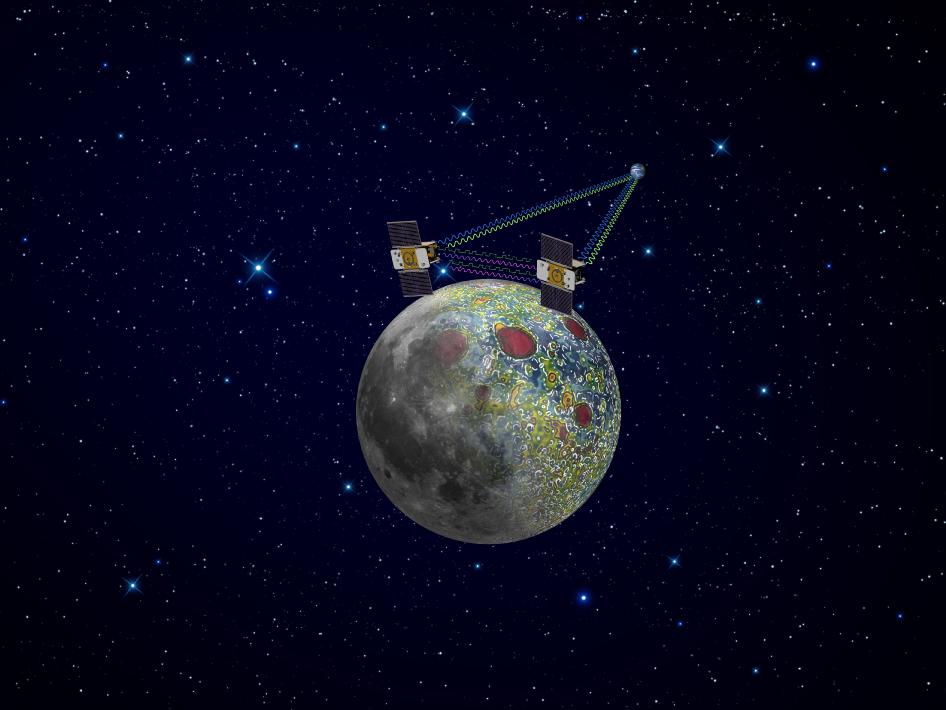GRAIL’s orbit the Moon

Using a precision formation-flying technique, the twin GRAIL
spacecraft will map the moon’s gravity field, as depicted in this
artist’s rendering.
Image credit: NASA/JPL-Caltech
spacecraft will map the moon’s gravity field, as depicted in this
artist’s rendering.
Image credit: NASA/JPL-Caltech
The two spacecraft of the Gravity Recovery And Internal Laboratory (GRAIL) mission recently settled into orbit around the Moon after their launch in September last year. They will spend the next few months gently maneuvering into formation on a circular orbit passing over the Moon’s poles, at an altitude of only 55km above the lunar surface, in preparation for some clever sciencing. The two spacecraft, GRAIL-A and GRAIL-B, are equipped with a GPS-like system of precisely timed radio signals to measure their separation with an accuracy of only several microns. Such precise measurements are the key to the mission’s science objective: mapping the Moon’s gravity field.
Since the Moon is not a perfectly smooth uniform sphere, its gravity field is slightly irregular. The field in an open plain, for example, is different to the field next to a massive mountain (which has its own gravity which combines with that of the rest of the Moon). The theory is that, as the individual GRAIL spacecraft pass through the stronger and weaker areas of the Moon’s gravity field, their orbits will be affected by a very tiny amount. Over time, enough of these peturbations will be recorded for mission scientists to be able to map not only the mountains and hills of the Moon, but geological features hidden beneath the surface. There is a similar mission mapping the Earth, (GRACE) which has been running since 2002.
